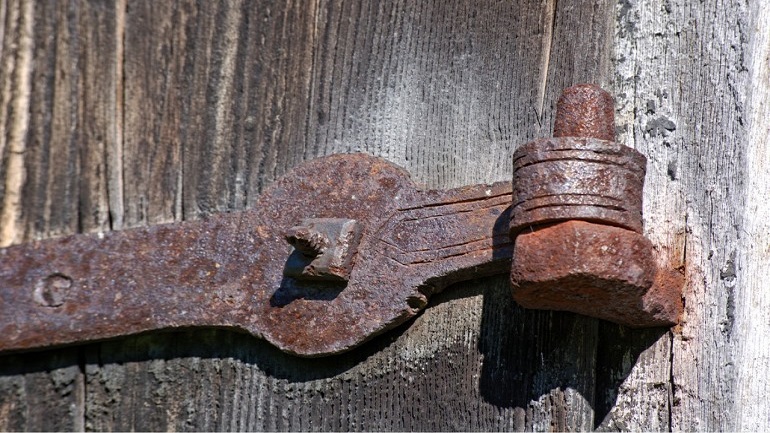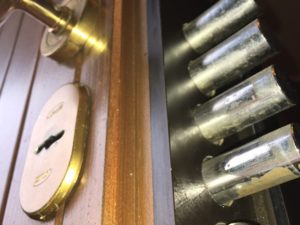
Corrosion resistance of door hinges
What level of corrosion resistance do door hinges have? Are there different grades of resistance? How to choose the most suitable hinge for your door.
Selection of a door hinge according to its operating environment
When installing door hinges it is wise to double check the environmental corrosivity of their operating conditions. Corrosion resistance of door hinges is fundamental for installations in highly corrosive environments such as industrial or marine applications.
Anti-corrosion performance of hinges
Resistance to corrosion of a hinge is found on its classification text string according to norm EN 1935, more precisely it is identified by the 6th digit from the left
4 7 5 1 1 3 1 13
The regulation for door hinges sets out 5 grades of corrosion resistance in conformance to EN1670:
- Grade (class) 0: no definable corrosion resistance
- Grade (class) 1: low resistance
- Grade (class) 2: moderate resistance
- Grade (class) 3: high resistance
- Grade (class) 4: very high resistance
Validation tests
Regulations EN 1670 classify the corrosion resistance of building hardware. The norms for each grade of resistance require specific salt spray tests:
- Grade (class) 0: no definable corrosion resistance, no testing required
- Grade (class) 1: light resistance 24 hours salt spray testing
- Grade (class) 2: moderate resistance 48 hours salt spray testing
- Grade (class) 3: high resistance 96 hours salt spray testing
- Grade (class) 4: very high resistance 240 hours salt spray testing
- Grade (class) 5: excellent resistance 480 hours salt spray testing
At the end of the test the components must not show any visible corrosion of the base metal substrate. It is acceptable to have one (1) corrosion spot of 2 sq.mm on a 650 square sq.mm surface.
From the above lists we notice that EN1670 shows an extra grade (5 – excellent resistance) which is not shown on EN1935: perhaps an oversight or a grade implemented after the publication of EN1935?
Difference between single-axis and multi-axis concealed hinge
The classification of the different types of concealed hinges is hereby clarified:
- Multi-axis are tested according to proprietary guidelines up to 6 grades of resistance in accordance to EN1670
- Single-axis are regulated by EN1935 and have 5 grades as per EN1670. This does not mean that a single-axis hinge can’t reach grade 6 but the regulation does not recognize this grade hence a grade 6 would not be shown on the identification coding.
Corrosion protection methods
Corrosion protection methods range from simple coating to electrolytic galvanization but in some instances certain products can be made out of self-protecting metals such as stainless steel.
Grades of corrosion resistance and operating environment
Appendix A on EN1670 shows some example applications for the different grades of corrosion resistance:
- Grade 0: unspecified working conditions where corrosion resistance is not relevant
- Grade 1: indoor use in warm and dry environments (interior of buildings)
- Grade 2: indoor use with a chance of mild condensation (interior of unheated buildings / warehouses)
- Grade 3: outdoor use with occasional or frequent rain or dew that may wet the hinge (porches, building entrances, etc.)
- Grade 4: outdoor use in demanding conditions (outdoor installations in marine or industrial areas and swimming pools)
- Grade 5: outdoor use in exceptionally harsh conditions where long-term product protection is required (off shore platforms, marine, heavy industries with high levels of pollution)
How about you? Do you ever check the corrosion resistance of the hinges fitted on your doors?
Contact us for further information !







